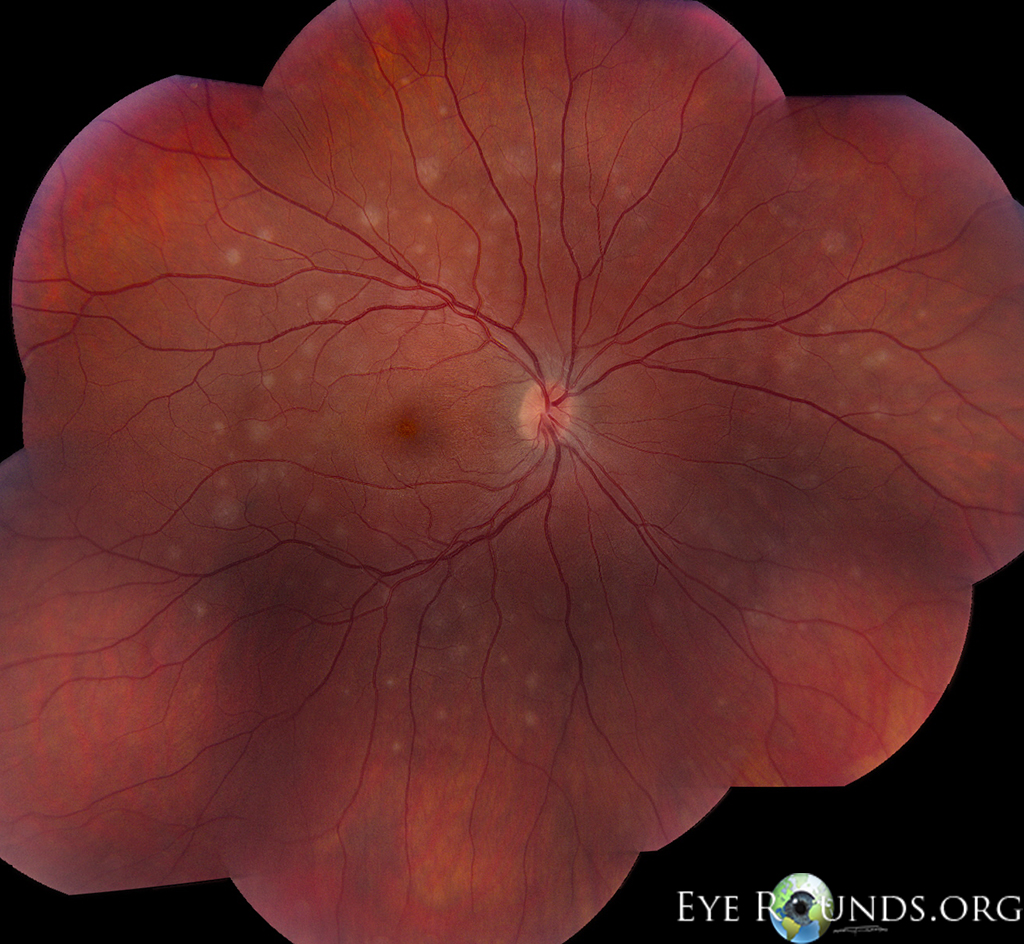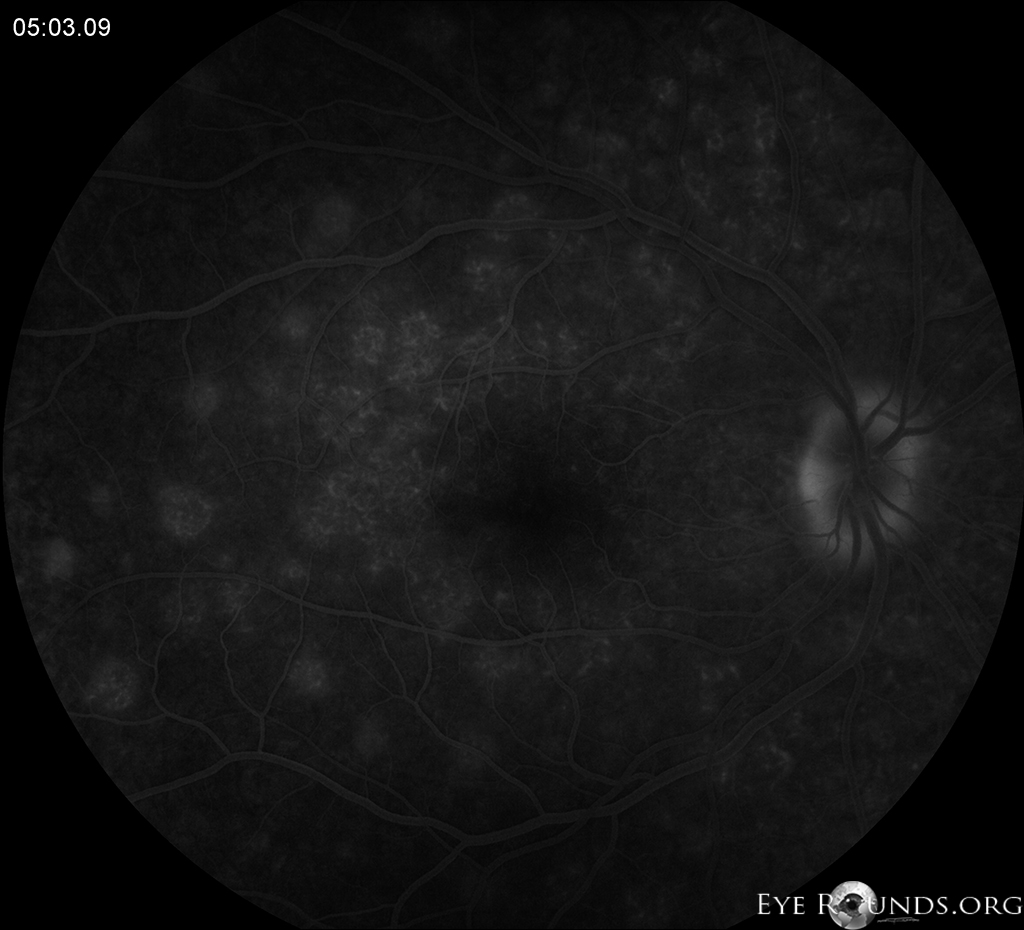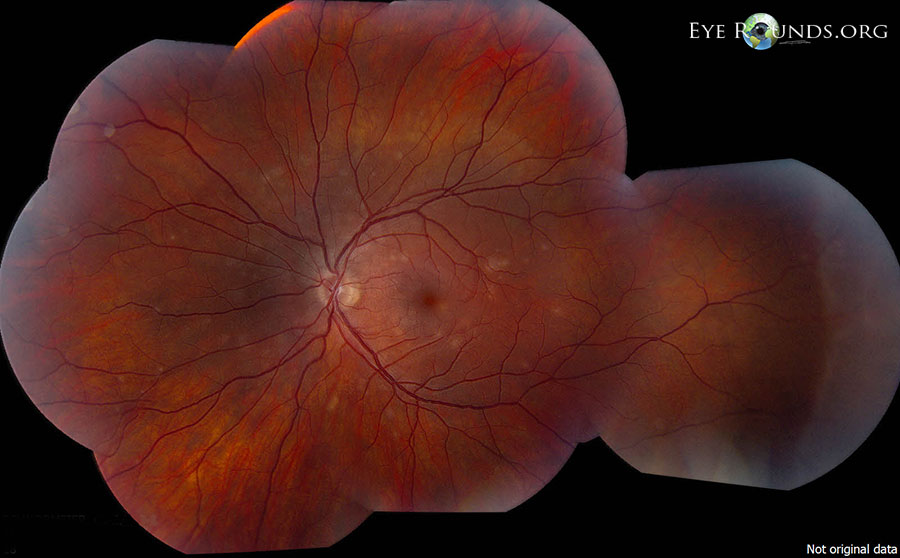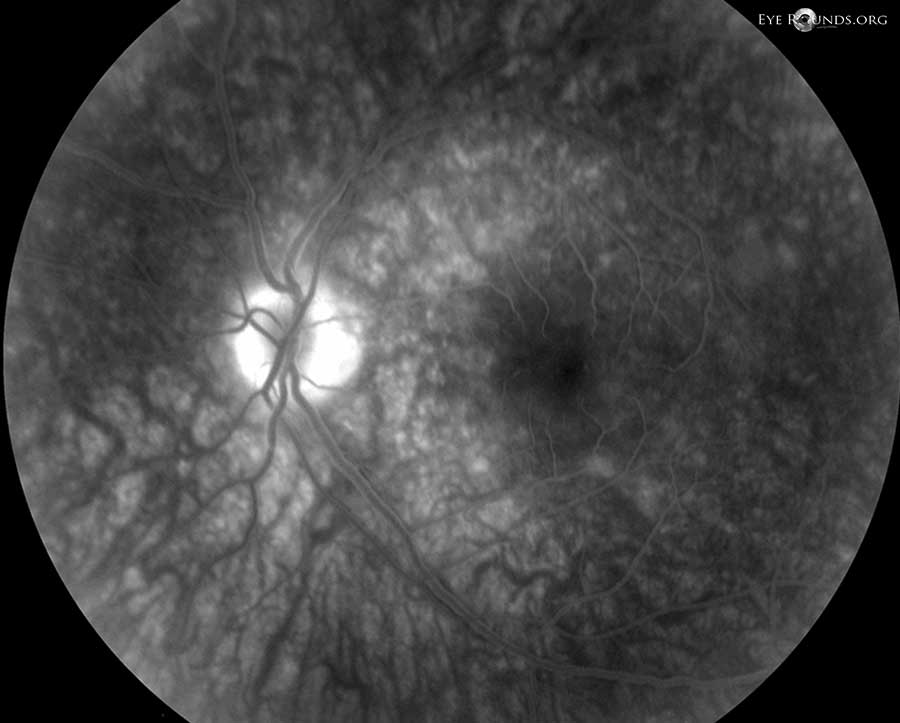
Multiple evanescent white dot syndrome (MEWDS) results from idiopathic inflammation of the retina. It is most common in healthy, young, white, myopic females and typically has an acute and unilateral presentation.




This case represents the more severe end of the spectrum for MEWDS. This young, myopic female presented with a complaint of unilateral shimmering photopsias and a paracentral scotoma. Her exam showed the pathognomic subfoveal yellow/orange granularity in the right eye along with an FFA that had a classic "wreathlike" hyperfluorescence. Disc edema is also seen in the right eye.

Ophthalmic Atlas Images by EyeRounds.org, The University of Iowa are licensed under a Creative Commons Attribution-NonCommercial-NoDerivs 3.0 Unported License.